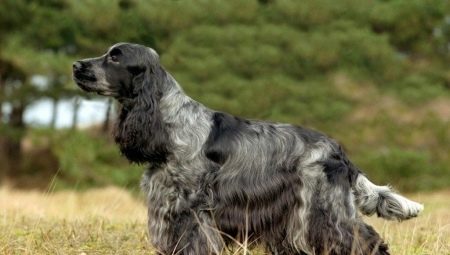Russian hunting spaniels are a domestic breed of dogs whose representatives are widely used for hunting. Such animals are smart, hardy and active. However, without proper training, the dogs will become naughty and will get out of control of the owner. Despite the fact that Russian hunting spaniels are easy to train, their training has some nuances that every owner should know about.

Nature and behavior
Hunting Spaniels have all the necessary qualities that allow them to be excellent hunters. These dogs are persistent, have excellent instincts and are easy to train.
Animals are ready to carry out commands not only of the owner, but also of any other person on the hunt who has a gun in his hands.
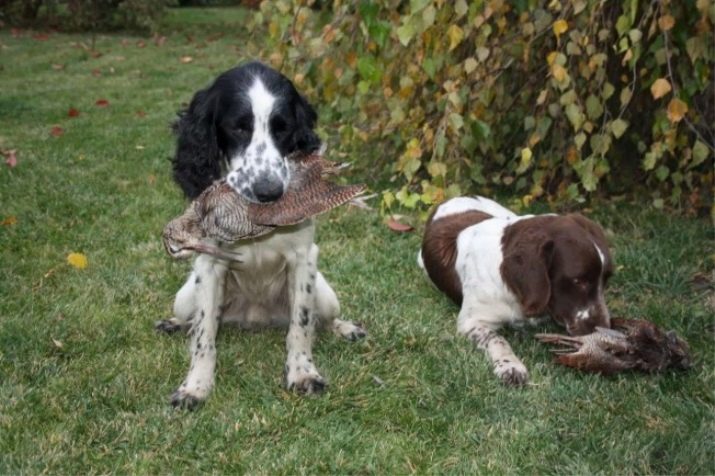
Russian hunting spaniels get not only for hunting. These dogs are great companions for all family members. They are mobile and enjoy playing with children or go camping with adults. Animals by nature are good swimmers and will not miss the opportunity to splash in the water.
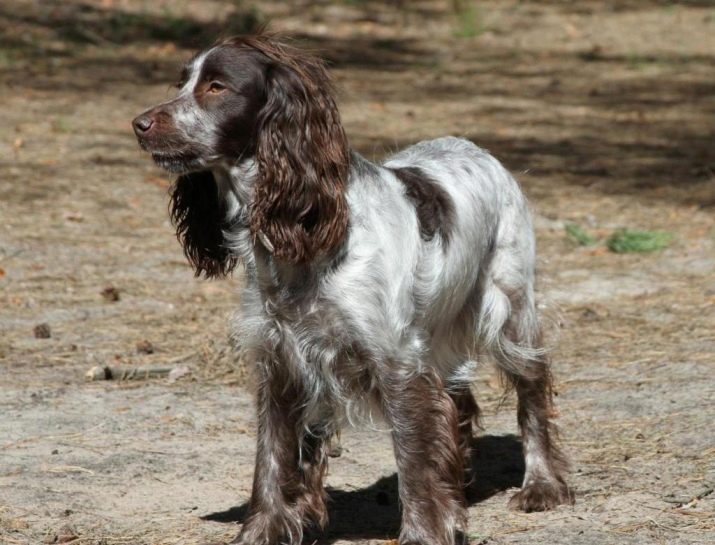
The dog gets along well with other animals in the house. Spaniels easily get along in the same territory not only with other dogs, but also with cats. However, it is not recommended to keep the dog with small pets, such as hamsters or guinea pigs. It is highly likely that the spaniel may succumb to the hunting instinct. If desired, the ward can develop watchdog qualities.
However, it is believed that if you use the dog as a guard, then its hunting characteristics are significantly impaired.
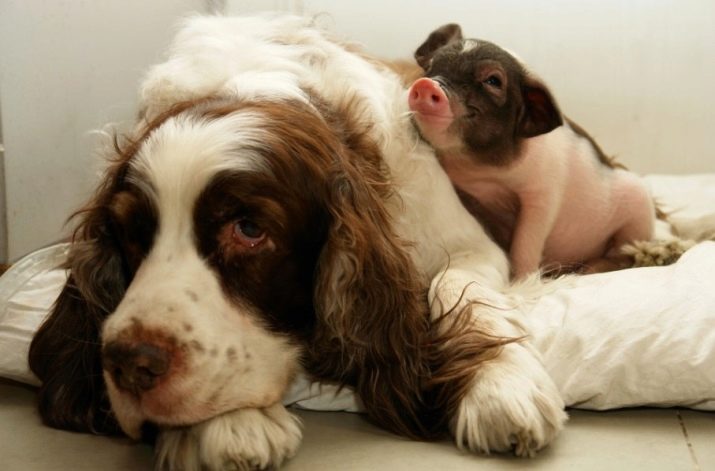
At what age should I start raising?
The education and training of Russian hunting spaniels is a mandatory and responsible matter. If the dog is not properly trained, then it will grow up naughty and can bother everyone with hyperactivity. It is recommended to start raising puppies as soon as possible.
Young individuals respond better to commands and more easily absorb new information.
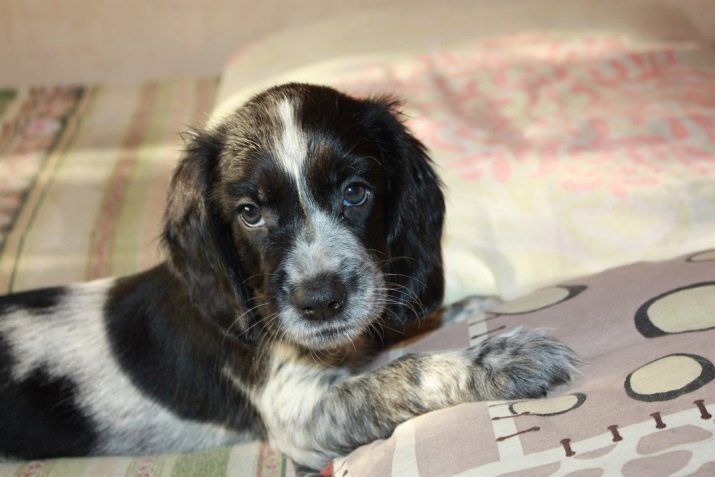
At the age of 8 to 12 weeks, puppies rush to actively explore the world around them. They are curious and eager to study every new subject, get to know people and other animals, if any, in the house. During this period, it is recommended to start training the pet with the simplest teams. The puppy must begin to respect the authority of the owner and unquestioningly fulfill its requirements. At this age, spaniels are usually trained to respond to at least 2 teams: “Come to me!” and "Place!"
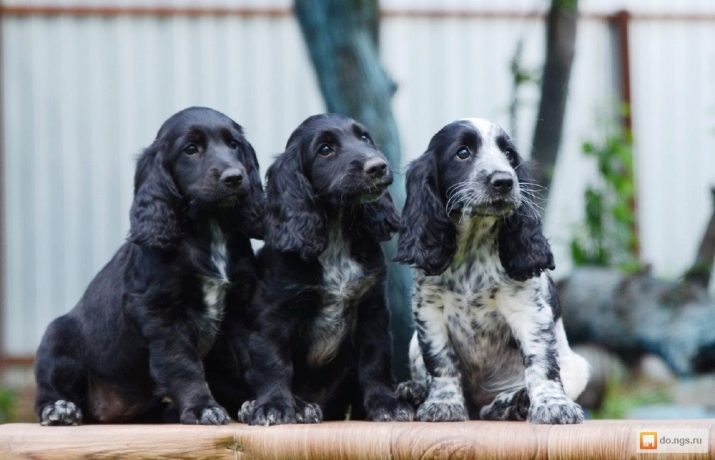
General recommendations
During training, it is necessary to take into account the nature and behavioral characteristics of the pet. Each animal has a number of features that distinguish it from other individuals, and therefore needs an individual approach. When interacting with Russian hunting spaniels it is equally harmful both to show infinite love and to be excessively strict.
During training, the method of encouragement and approval is widely used. It consists in the fact that after each successfully executed team it is necessary to reward the dog with a small amount of his favorite goodies, to praise and stroke. In addition to praise for obedient execution of commands, a punishment system must also be present.
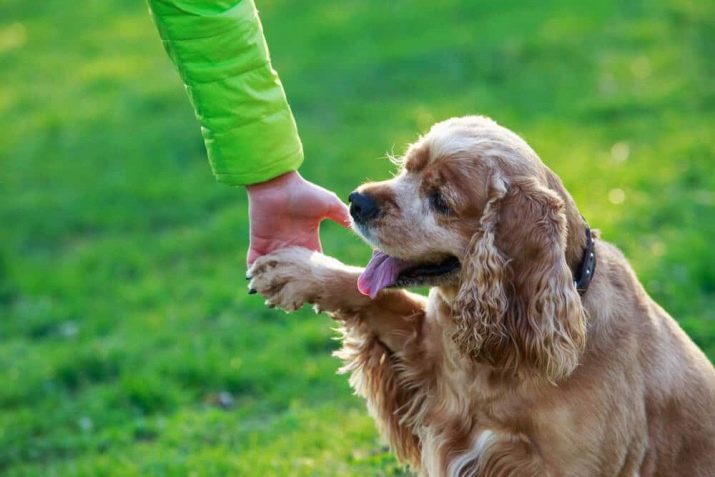
It is not recommended to resort to physical strength when punishing a dog. It’s better to try to explain the reason for dissatisfaction with words, slightly raising your voice. During training, you should be careful about contacting your pet and teams. It is impossible for the animal to respond to its name in the same way as to the call "To me!" To do this, before each team it is necessary to pronounce the name of the dog, which will serve as a kind of signal.
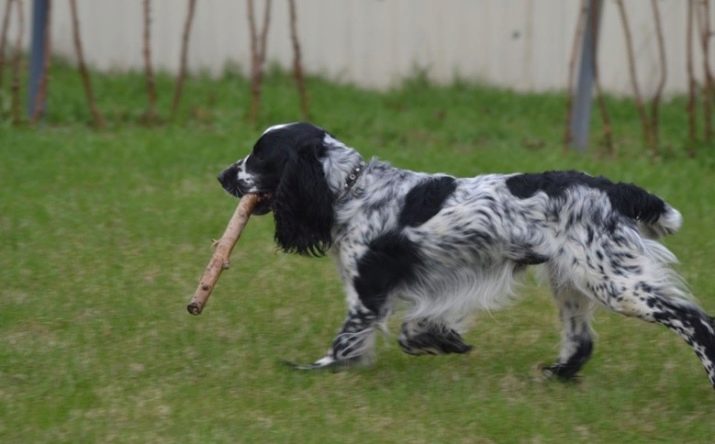
Raising a Russian hunting spaniel at home is not as difficult as it might seem at first glance. The key to success in the first place is the respect of the pet to the owner. Dogs are the easiest to train, whose upbringing began from 1 month of age.
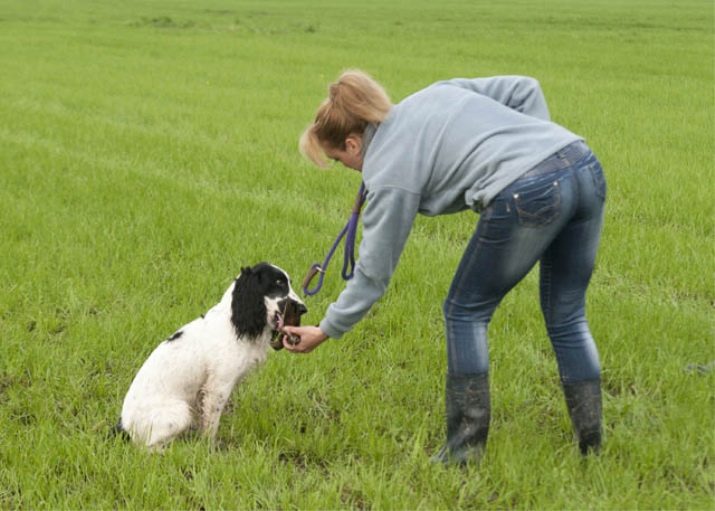
Puppy training
The starting point of raising puppies of the Russian hunting spaniel can be considered his accustoming to the owner. This process begins from the very moment when the animal excommunicates and gets to the person. Learning by and large comes down to the fact that the owner should be next to the pet as often as possible.
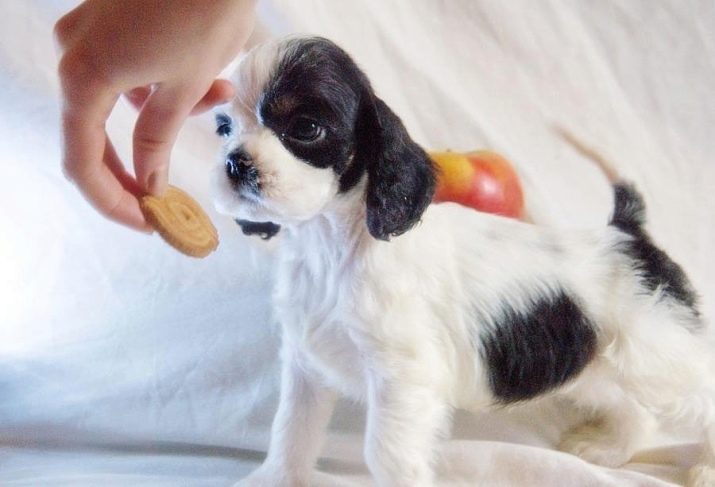
Only the owner should feed, walk and play with the puppy. Thus, the animal will quickly become attached to one specific person, to which it will listen most of all in the future. During this period, in no case should you be rude to the spaniel and yell at him. Otherwise, the psyche of the animal may be impaired.

Nickname training
The basic skill of dogs of all breeds is the ability to respond and respond to their name. Puppies are taught the nickname immediately after they fall into the hands of a person. For boys and girls, it is recommended to choose light and not very long names. When referring to an animal, you should not change the nickname in any way, whether it is simply a change in stress or an abbreviated and diminutive variant.
At first, pronounce the name of the pet when communicating with him as often as possible. It is better to give him some treat after contacting the animal. Over time, the animal develops a reflex, and a call by name begins to be associated with the receipt of delicious food.
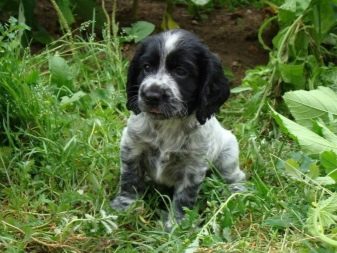
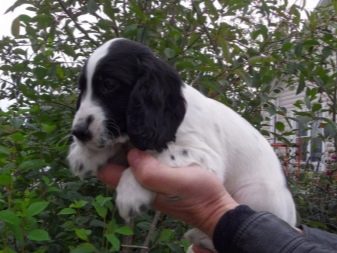
Discipline
An important point in education is the training of puppies in their place and accuracy. First of all, this is necessary so that the dog does not spoil the property in the apartment and behaves in a disciplined manner. After the little puppy was brought home, it is necessary to arrange for him personal space.
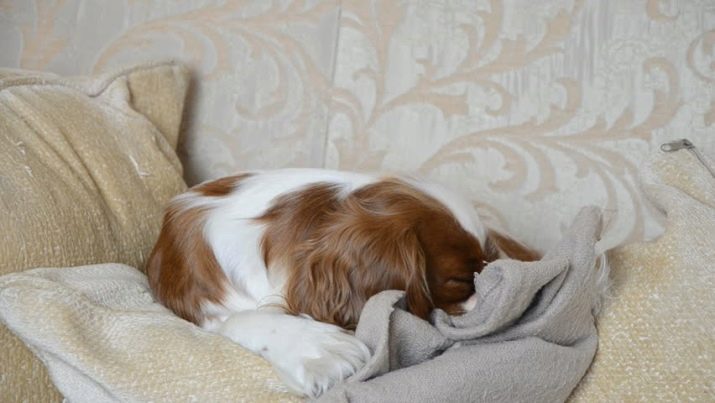
At the chosen place, a pet bed is arranged. If the animal bothers the owner with its pranks or tries to go to bed somewhere else, then you need to loudly call him by name and then voice the command “Place!”. Then you need to slightly slap his palm on the back of the body and carry it to its territory. After the animal is on its lounger, the "Place!" pronounced again to fix the result.
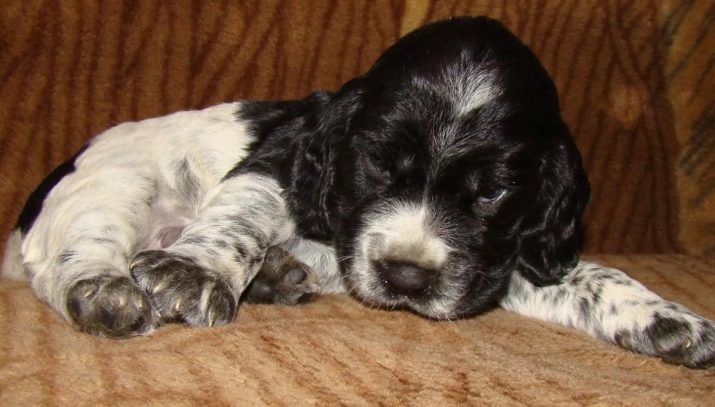
Item Offering
Team "Give!" considered basic for hunting dogs. Teaching her is recommended at an early age. As an object that will represent the prey, you can use a bunch of feathers of birds. A bunch of feathers need to be thrown and say the order "Serve!".
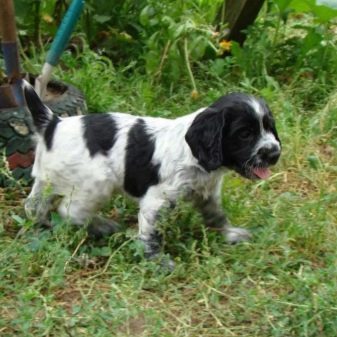
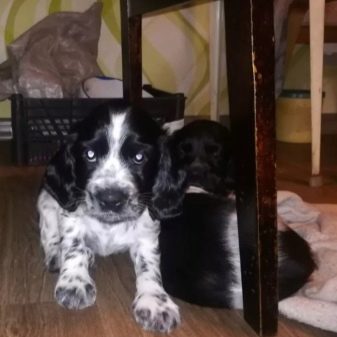
When the animal finds an object and takes it with its teeth, it is necessary to approach it and offer a treat. The hand with food should be held above the nose of the dog, and an empty palm - under the jaw. When the pet begins to open its mouth to receive a treat, the command is pronounced again "Serve!".
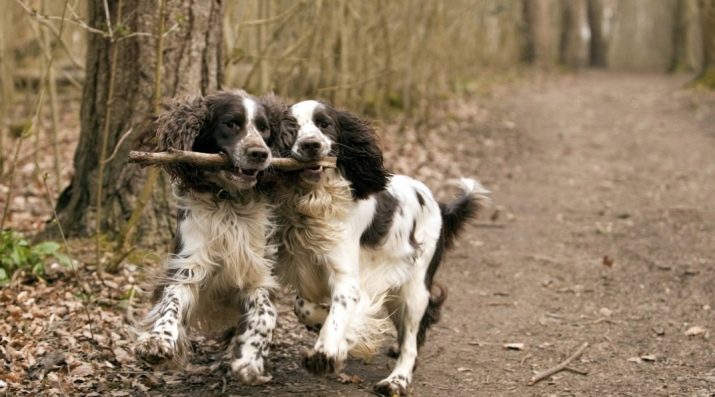
How to train an adult dog?
The principle of training an adult is practically no different from training puppies. The mechanisms of action in both cases will be almost identical. The difference for the most part lies in the complexity of the teams. Puppies are trained to master basic skills and primitive commands, while adult animals are trained in more complex tricks.
After the pet has mastered the command "Give!" and it will be easy to carry out, you can start accustoming to water. Russian hunting spaniels dive well for wild waterfowl. Therefore, if there are plans to take a dog for hunting, it is simply necessary to develop the potential laid down by nature.
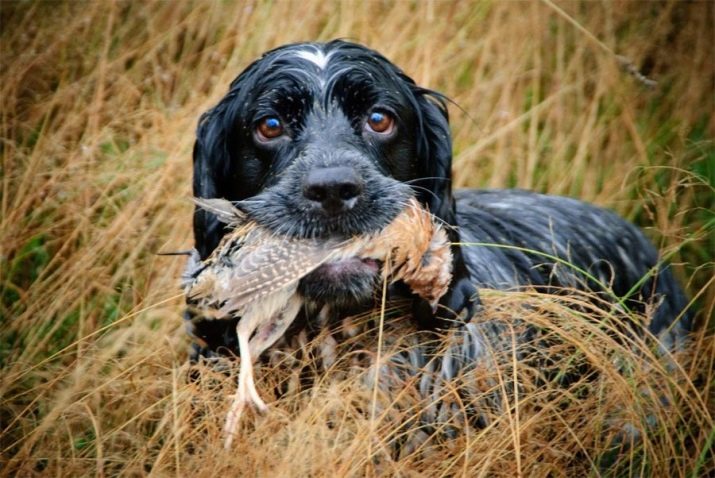
The first classes are best done in shallow water bodies. A dog’s usual object (a stick or a toy) is thrown into the water, on which the “Give!” Command was practiced, at a distance of no more than 1 m from the shore. If the dog willingly goes into the water, then gradually the length of the throw should be increased. No need to overwork the dog and ask her to bring an object from the reservoir more than 3 times in a row without a break. Over time, the cast length should reach 30 m.
Having learned to swim, the pet will willingly rush into the pond without commands.
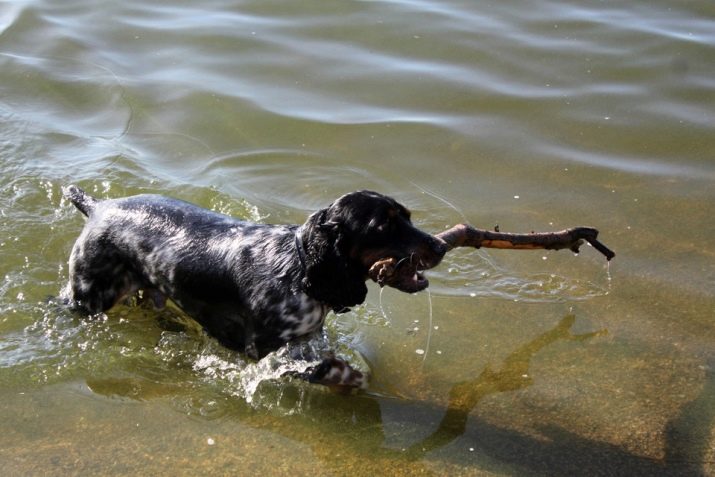
Another useful skill for hunting will be the ability to jump over massive objects, dumped trees. A disciplined pet will easily master it. Walking with the animal in the forest, you need to go up to some kind of obstacle, for example, a large stone or a lying tree, and jump over the barrier yourself to an exclamation “Hop!” The spaniel must immediately follow his master. If this does not happen, pull the leash slightly.
Gradually, the obstacles should become higher. Over time, you also need to abandon the leash. It is useful to teach the spaniel to jump not only through high barriers, but also through holes.

You can learn all about this breed of dogs from the video below.
